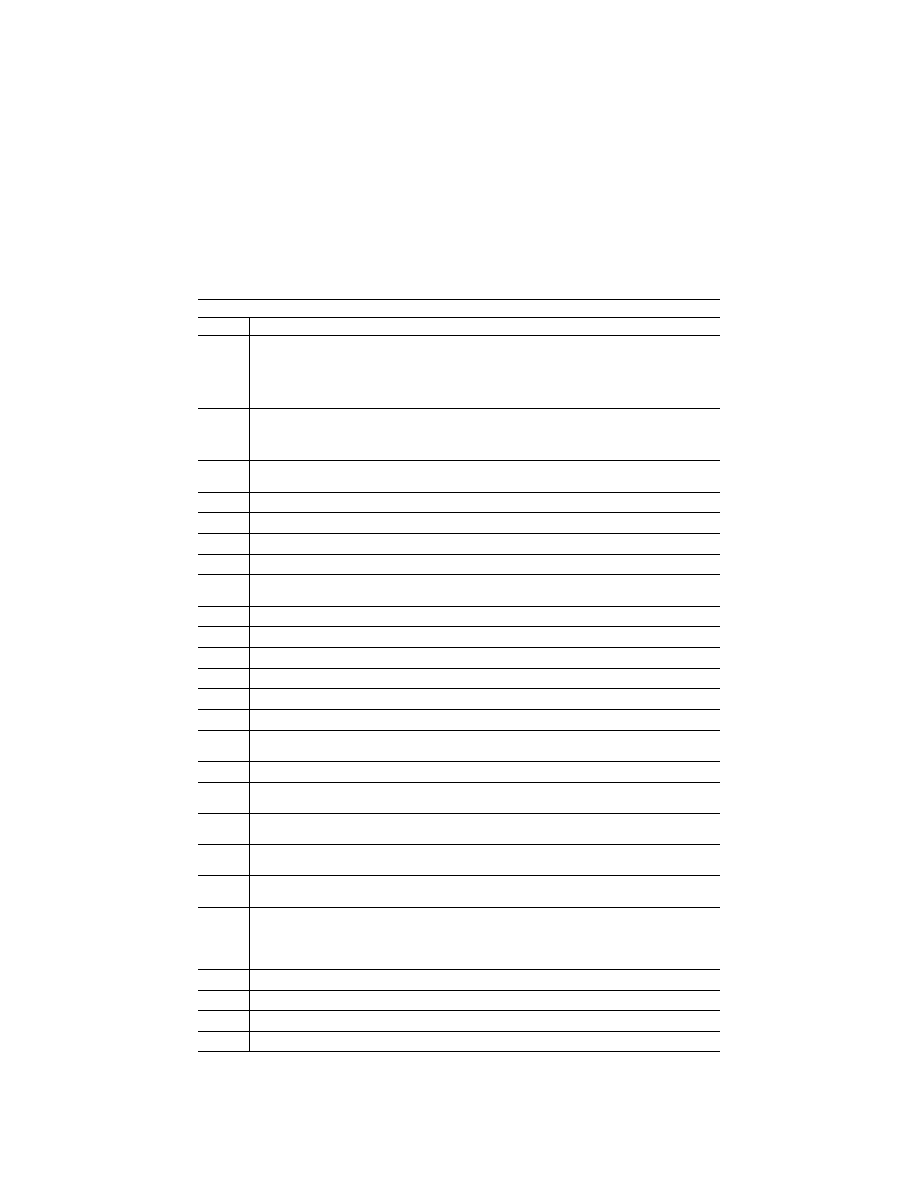
347
Federal Aviation Administration, DOT
Pt. 60, App. D
T
ABLE
D3B—T
ABLE OF
F
UNCTIONS AND
S
UBJECTIVE
T
ESTS
A
IRPORT OR
L
ANDING
A
REA
C
ONTENT
R
EQUIREMENTS FOR
Q
UALIFICATION AT
L
EVEL
7 FTD—Continued
QPS requirements
Entry No.
Operations tasks
1.a. ...........
A minimum of one (1) representative airport and one (1) representative helicopter landing area model. The airport
and the helicopter landing area may be contained within the same visual model. If this option is selected, the ap-
proach path to the airport runway(s) and the approach path to the helicopter landing area must be different. The
model(s) used to meet the following requirements may be demonstrated at either a fictional or a real-world air-
port or helicopter landing area, but each must be acceptable to the sponsor’s TPAA, selectable from the IOS,
and listed on the SOQ.
1.b. ...........
Fidelity of the Visual Scene. The fidelity of the visual scene must be sufficient for the aircrew to visually identify the
airport and/or helicopter landing area; determine the position of the simulated helicopter within the visual scene;
successfully accomplish take-offs, approaches, and landings; and maneuver around the airport and/or helicopter
landing area on the ground, or hover taxi, as necessary.
1.b.1. ........
For each of the airport/helicopter landing areas described in 1.a., the FTD visual system must be able to provide at
least the following:
1.b.1.a. .....
A night and twilight (dusk) environment.
1.b.1.b. .....
A daylight environment.
1.c. ...........
Runways:
1.c.1. ........
Visible runway number.
1.c.2. ........
Runway threshold elevations and locations must be modeled to provide sufficient correlation with helicopter sys-
tems (e.g., altimeter).
1.c.3. ........
Runway surface and markings.
1.c.4. ........
Lighting for the runway in use including runway edge and centerline.
1.c.5. ........
Lighting, visual approach aid (VASI or PAPI) and approach lighting of appropriate colors.
1.c.6 .........
Taxiway lights.
1.d. ...........
Helicopter landing area.
1.d.1. ........
Standard heliport designation (‘‘H’’) marking, properly sized and oriented.
1.d.2. ........
Perimeter markings for the Touchdown and Lift-Off Area (TLOF) or the Final Approach and Takeoff Area (FATO),
as appropriate.
1.d.3. ........
Perimeter lighting for the TLOF or the FATO areas, as appropriate.
1.d.4. ........
Appropriate markings and lighting to allow movement from the runway or helicopter landing area to another part of
the landing facility.
2. ..............
Visual scene management.
The following is the minimum visual scene management requirements for a Level 7 FTD.
2.a. ...........
Runway and helicopter landing area approach lighting must fade into view appropriately in accordance with the en-
vironmental conditions set in the FTD.
2.b. ...........
The direction of strobe lights, approach lights, runway edge lights, visual landing aids, runway centerline lights,
threshold lights, touchdown zone lights, and TLOF or FATO lights must be replicated.
3. ..............
Visual feature recognition.
The following are the minimum distances at which runway features must be visible. Distances are measured from
runway threshold or a helicopter landing area to a helicopter aligned with the runway or helicopter landing area
on an extended 3
°
glide-slope in simulated meteorological conditions. For circling approaches, all tests apply to
the runway used for the initial approach and to the runway of intended landing.
3.a. ...........
For runways: Runway definition, strobe lights, approach lights, and edge lights from 5 sm (8 km) of the threshold.
3.b. ...........
For runways: Centerline lights and taxiway definition from 3 sm (5 km).
3.c. ...........
For runways: Visual Approach Aid lights (VASI or PAPI) from 5 sm (8 km) of the threshold.
3.d. ...........
For runways: Runway threshold lights and touchdown zone from 2 sm (3 km).
VerDate Mar<15>2010
20:48 Jan 30, 2014
Jkt 232047
PO 00000
Frm 00357
Fmt 8010
Sfmt 8002
Q:\14\14V2.TXT
ofr150
PsN: PC150